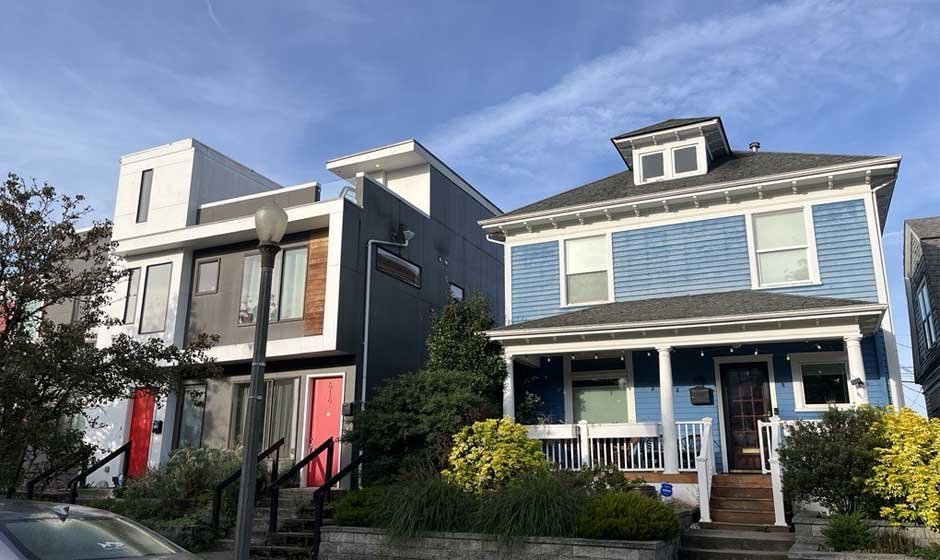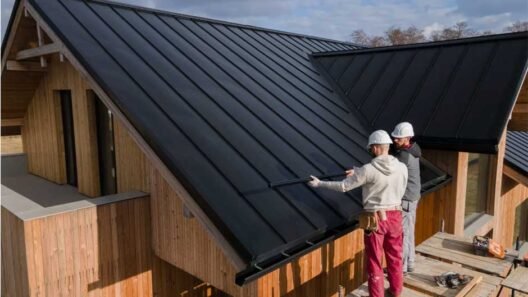Introduction to Middle Housing
Middle housing represents a vital housing market segment that bridges the gap between single-family homes and large apartment complexes. This category includes duplexes, triplexes, fourplexes, townhouses, and cottage clusters—structures often missing in today’s urban neighborhoods. Middle housing enriches the community fabric and addresses critical housing shortages by providing more nuanced and diverse living options. For homeowners and developers looking to add middle housing options, working with an experienced ADU builder can be a key step in successfully integrating these structures into existing neighborhoods.
Modern middle housing fits seamlessly within established communities, maintaining neighborhood character while increasing housing stock. These homes are typically smaller-scale, human-scaled spaces that offer flexibility for different stages of life, often within walkable communities close to amenities and transit. In an era marked by housing affordability crises and increasing urbanization, middle housing options empower cities to grow without sprawling outward or sacrificing local identity.
The Historical Context of Middle Housing
Middle housing once formed the backbone of many American cities, with options like duplexes and townhomes common in pre-World War II urban neighborhoods. However, the landscape changed postwar, as zoning ordinances favored single-family dwellings. This shift not only led to the dominance of low-density suburbs but also excluded naturally affordable housing types, driving up costs and reducing inclusivity. Today, the move to rediscover and reimplement middle housing models is key to reversing decades of sprawl and monoculture.
Benefits of Middle Housing
- Affordability: Middle housing is a cost-effective entry point for first-time buyers and renters, helping bridge the affordability gap. Smaller unit sizes and shared land ownership can lower residents’ costs, while denser development efficiently uses urban land.
- Diversity: Middle housing accommodates a spectrum of household needs and budgets by offering a range of unit sizes, layouts, and price points. This diversity helps cultivate vibrant, inclusive neighborhoods that welcome everyone from young families to retirees.
- Sustainability: Compact middle housing supports walkable, transit-friendly communities and reduces car reliance. Additionally, leveraging existing infrastructure and gradually increasing density can significantly reduce the environmental impact of new construction.
Despite these benefits, obstacles remain. Research from the Urban Institute highlights how targeted zoning reforms and focused advocacy are critical to overcoming barriers to implementation.
Challenges in Implementing Middle Housing
Many municipalities maintain zoning laws restricting development to single-family homes in large swathes of residential land, making it illegal or excessively difficult to build multi-unit dwellings. This regulatory inertia stifles innovation and reduces available housing choices. Community opposition, often rooted in concerns over property values, traffic, or neighborhood character, can stall or derail proposed middle housing projects. Developers also encounter challenges securing financing, as lenders may view smaller, non-traditional housing projects as riskier investments with slimmer profit margins.
Case Studies: Successful Middle Housing Initiatives
- Portland, Oregon: Recognizing the urgent need for broader housing options, Portland adopted sweeping zoning reforms that permit duplexes, triplexes, and fourplexes in what were once exclusively single-family neighborhoods. These changes have already expanded the diversity of housing stock and slowed displacement.
- Minneapolis, Minnesota: Taking a bold step in 2018, Minneapolis became the first major U.S. city to eliminate single-family zoning. The new citywide ordinance encourages a mix of small multi-family homes in every neighborhood, helping open opportunities for residents of varying incomes and backgrounds.
From California to Massachusetts, other jurisdictions are modeling similar initiatives and carefully tracking outcomes to address specific community needs.
Policy Recommendations for Promoting Middle Housing
- Zoning Reform: Municipalities should update their zoning codes to permit diverse housing types. Removing bans and restrictive requirements would allow for more flexible and creative developments tailored to today’s needs.
- Community Engagement: Early and transparent involvement of residents in the planning process helps address worries and builds buy-in. Town halls, workshops, and visual tools can help illustrate how middle housing enhances—and not undermines—community character.
- Financial Incentives: Local governments can provide grants, tax abatements, or expedited permitting to developers building middle housing. These measures help de-risk projects and encourage innovation.
Conclusion
Middle housing is a practical response to today’s housing shortages, offering affordability, inclusivity, and sustainability paths. Its reemergence is not just about filling a gap in the housing market, but about rebuilding neighborhoods where everyone can belong. As more cities recognize the value of middle housing, the future for communities prioritizing diversity and long-term resilience looks brighter.













